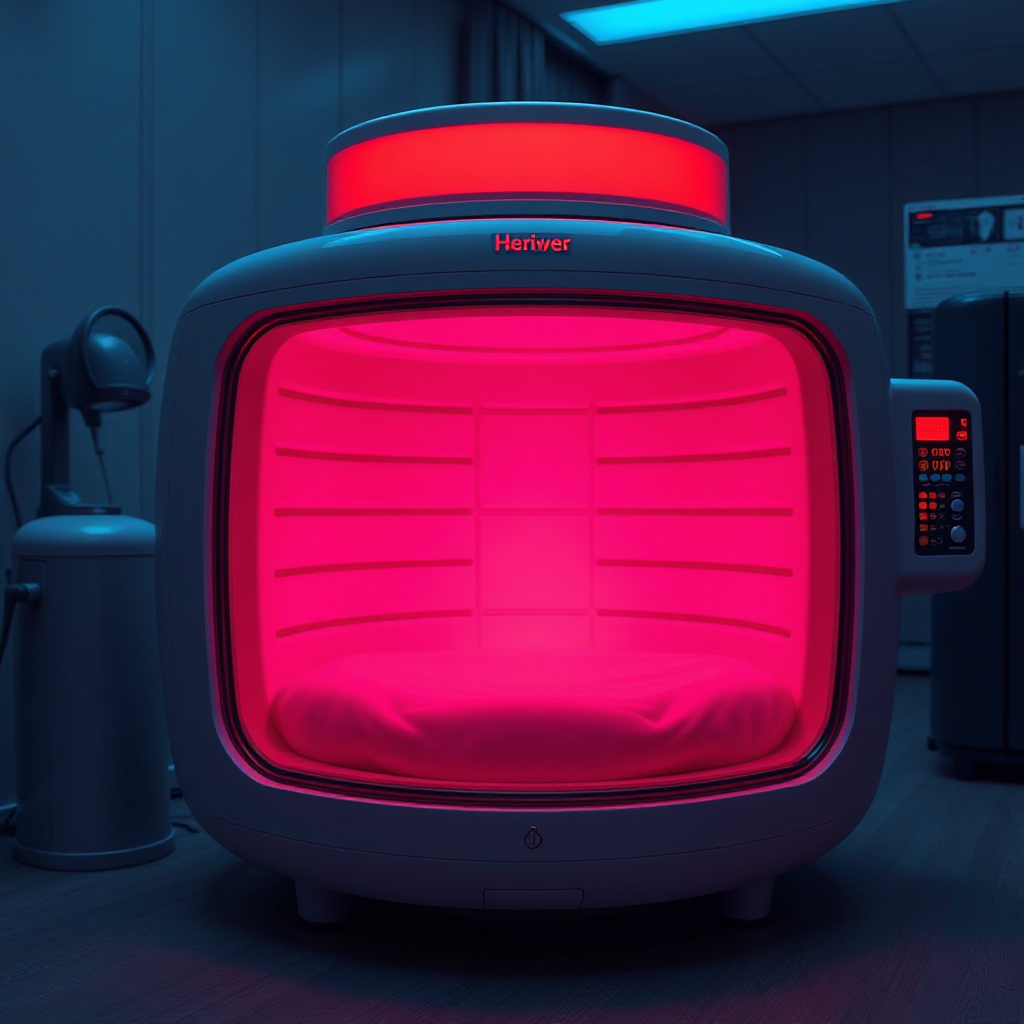Cancer Treatment with Hyperthermia: A Powerful Ally

Cancer treatment with hyperthermia is revolutionizing the way we combat cancer by utilizing heat to target and destroy cancer cells. This cutting-edge method directly damages cancer cells while sparing healthy tissues to a significant extent. When paired with conventional treatments such as chemotherapy or radiation, cancer treatment with hyperthermia amplifies their effectiveness. For instance, clinical studies have revealed that incorporating hyperthermia with chemotherapy prior to surgery significantly improved 10-year survival rates in women diagnosed with stage IIB or IIIA breast cancer. Additionally, it has shown remarkable success in addressing head and neck cancers, cervical cancer, and other types. By precisely focusing on cancer cells, cancer treatment with hyperthermia paves an encouraging path for the future of cancer care.
Key Takeaways
Hyperthermia uses heat to kill cancer cells but spares healthy ones. It is a strong helper in cancer treatment.
When used with chemotherapy or radiation, it works better. It helps people live longer and lowers the chance of cancer coming back.
This method works for many cancers like breast, cervical, and head and neck cancers. It is helpful for cancers that don’t respond to usual treatments.
Hyperthermia causes fewer side effects than regular treatments. This makes cancer care more comfortable.
Talk to your doctor about hyperthermia to see if it can help in your cancer treatment plan.
What is Hyperthermia?

Definition of Hyperthermia
Hyperthermia refers to a medical treatment where body tissues are heated to temperatures as high as 113 °F. This heat damages and kills cancer cells while sparing healthy tissues. It is a highly targeted approach that minimizes harm to surrounding areas. Currently, hyperthermia is available at select treatment centers in the United States and is often combined with traditional therapies like chemotherapy or radiation therapy to improve outcomes.
The concept of using heat to treat cancer has a long history. Ancient civilizations, including those in Egypt, India, and China, used heat to cauterize tumors. In the 1850s, surgeons observed that high fevers could lead to tumor regression. Over the last 15 years, advancements in technology have reignited interest in hyperthermia as a modern cancer treatment.
Year/Period | Development Description |
|---|---|
3000 B.C. | Smoldering sticks of wood were used to treat tumors. |
1866 | Busch noted tumor regression linked to high fever. |
Last 15 years | Technological progress revived hyperthermia's medical use. |
Role of Hyperthermia in Cancer Treatment
Hyperthermia plays a vital role in cancer treatment by directly targeting cancer cells. It heats tissues to high temperatures, which damages cancer cells and deprives them of essential nutrients. This process can shrink tumors and make cancer cells more vulnerable to other treatments. When combined with chemotherapy or radiation therapy, hyperthermia enhances their effectiveness. For example, it increases the sensitivity of cancer cells to radiation and improves chemotherapy delivery by enhancing blood flow to tumors.
This treatment also addresses challenges posed by resistant cancers. By suppressing resistance pathways in cancer stem cells, hyperthermia makes these cells more susceptible to traditional therapies. Additionally, it improves oxygenation in hypoxic tumors, which are typically harder to treat with radiation. These combined effects make hyperthermia a powerful ally in cancer care.
Tip: Hyperthermia not only targets cancer cells but also activates your immune system, helping your body fight cancer more effectively.
How Hyperthermia Works
Mechanisms of Action
Heat-induced damage to cancer cells
Hyperthermia works by exposing cancer cells to high temperatures, which disrupts their normal functions. When heated, cancer cells experience physical changes that impair their ability to survive. For example:
It alters the structure of cellular components, including proteins and membranes.
It inhibits DNA repair mechanisms, particularly the homologous recombination pathway, by degrading BRCA2 proteins.
It triggers immune responses, which help your body fight cancer more effectively.
It modifies the tumor microenvironment, reducing factors like oxygen and nutrients that tumors need to grow.
These combined effects weaken cancer cells, making them more vulnerable to destruction.
Disruption of tumor blood supply
Hyperthermia also targets the blood vessels that supply tumors. This process damages the endothelial cells lining these vessels, leading to degeneration and reduced blood flow. Shortly after treatment, you may see effects like edema, congestion, and even hemorrhage in the tumor area. Over the next 48 hours, progressive vascular injury continues, cutting off the tumor's access to essential nutrients and oxygen. This disruption starves the tumor, further enhancing the treatment's effectiveness.
Note: By targeting both cancer cells and their blood supply, hyperthermia delivers a one-two punch to tumors.
Synergy with Other Treatments
Enhancing chemotherapy effectiveness
Hyperthermia enhances the impact of chemotherapy by increasing the sensitivity of cancer cells to drugs. It improves blood flow to the tumor, allowing chemotherapy agents to penetrate more effectively. Clinical studies have shown that hyperthermia can amplify the cytotoxic effects of chemotherapy while reducing systemic toxicity. This makes it a valuable addition to your treatment plan, especially for cancers that are resistant to standard therapies.
Boosting radiation therapy outcomes
When combined with radiation therapy, hyperthermia significantly improves treatment outcomes. It increases the radiosensitivity of cancer cells by reducing their ability to repair DNA damage caused by radiation. Additionally, hyperthermia raises oxygen levels in tumors, which makes cancer cells more susceptible to radiation. Enhanced blood flow and immune responses further contribute to the destruction of tumor cells in the treated area.
Tip: Combining hyperthermia with other treatments can maximize their effectiveness, offering you a more comprehensive approach to fighting cancer.
Benefits of Cancer Treatment with Hyperthermia

Improved Treatment Outcomes
Hyperthermia has shown remarkable success in improving cancer treatment outcomes. When combined with radiation therapy, it significantly increases the chances of a complete response, where no cancer remains. For example:
A randomized trial revealed that adding hyperthermia tripled the success rate for complete response, achieving 66.1% compared to 42.3% in the control group.
A Cochrane review of six trials found better overall survival rates at three years and reduced local recurrence rates when hyperthermia was included.
These results highlight how hyperthermia enhances the effectiveness of traditional treatments, offering you a better chance of recovery. By improving tumor control and survival rates, this approach makes cancer treatment more effective and promising.
Targeted Therapy with Minimal Side Effects
One of the most significant advantages of hyperthermia is its ability to target cancer cells while sparing healthy tissues. This precision minimizes side effects compared to other treatments like chemotherapy or radiation. Advanced technology and refined techniques have further reduced complications, making hyperthermia a safer option. Most side effects, such as mild skin irritation or discomfort, are short-term and manageable.
Hyperthermia works by heating tissues to temperatures up to 113°F, which damages cancer cells without harming surrounding healthy cells. This targeted approach ensures that your treatment is both effective and less taxing on your body. As a result, you can experience fewer disruptions to your daily life during therapy.
Potential for Treating Resistant Cancers
Hyperthermia offers hope for cancers that resist standard treatments. It disrupts resistance pathways in cancer cells, making them more vulnerable to therapies like chemotherapy and radiation. For instance, it improves oxygenation in hypoxic tumors, which are typically harder to treat. Studies have also shown higher complete response rates and better survival outcomes when hyperthermia is used for resistant cancers.
This innovative approach provides a new avenue for addressing challenging cases. By weakening cancer cells and enhancing the effects of other treatments, hyperthermia gives you a fighting chance against even the most stubborn tumors.
Tip: If you’re exploring options for cancer care, consider discussing hyperthermia with your healthcare provider. It could be the key to improving your treatment outcomes.
Applications of Cancer Treatment with Hyperthermia
Types of Hyperthermia
Hyperthermia offers three main approaches, each tailored to specific cancer types and treatment goals. These methods vary in their application and scope:
Type of Hyperthermia | Description |
|---|---|
Heats a small area like a tumor, using high temperatures to damage cancer cells. | |
Regional Hyperthermia | Uses low heat on larger areas, such as organs or limbs, often combined with chemotherapy. |
Whole-body Hyperthermia | Raises body temperature to enhance chemotherapy effectiveness for metastatic cancer. |
Local Hyperthermia
Local hyperthermia focuses heat on a specific tumor. Techniques include external heating for surface tumors, intraluminal heating for hollow organs, and interstitial heating for deep-seated tumors. This method effectively treats liver, kidney, and lung cancers by targeting cancer cells directly without invasive surgery.
Regional Hyperthermia
Regional hyperthermia applies heat to larger areas, such as an organ or limb. It often complements chemotherapy, enhancing drug delivery to the affected region. This approach is particularly effective for treating melanoma, lung cancer, and liver cancer.
Whole-body Hyperthermia
Whole-body hyperthermia raises your entire body temperature to fight cancers that have spread. This method boosts the effectiveness of chemotherapy for metastatic cancers, offering a promising option for widespread disease.
Cancers Treated with Hyperthermia
Hyperthermia has shown success in treating various cancers. Some of the most commonly treated types include:
Breast cancer
Cervical cancer
Head and neck cancers
Melanoma
Soft tissue sarcoma
Bladder cancer
Ovarian cancer
For example, in breast cancer treatment, hyperthermia enhances the effects of chemotherapy and radiation. A 2020 clinical trial demonstrated improved 10-year survival rates for women with stage IIB or IIIA breast cancer when hyperthermia was added to chemotherapy before surgery. This highlights its potential to improve outcomes in challenging cases.
By targeting cancer cells directly and enhancing other treatments, hyperthermia continues to expand its role in cancer care. Whether you’re dealing with localized or metastatic cancer, this innovative approach offers hope for better results.
Safety and Side Effects of Hyperthermia
Is Hyperthermia Safe?
Hyperthermia is considered a safe treatment when performed under strict medical supervision. Specialists follow established protocols to ensure your safety during the procedure. Before treatment, doctors evaluate your eligibility based on specific criteria. For instance, you must tolerate chemotherapy agents like cisplatin and docetaxel and have measurable lesions within a 20 cm range. Certain conditions, such as active infections or pacemakers near the treatment site, may exclude you from undergoing hyperthermia.
During treatment, medical teams monitor your body temperature closely. Thermometry probes measure the heat levels in both the tumor and surrounding healthy tissues. This ensures that the heat remains within safe limits, minimizing the risk of complications. Below is a summary of the safety protocols:
Criteria Type | Details |
|---|---|
Eligibility Criteria | Patients must have received conventional regimens of 1.6 to 2.2 Gy per fraction. |
Must demonstrate tolerability for concurrent chemotherapy with cisplatin and docetaxel. | |
Must have measurable lesions within a 20 cm range. | |
Exclusion Criteria | Cases where re-irradiation is not tolerable. |
Participation in other clinical trials or inability to undergo follow-up. | |
Presence of large metallic implants or tattoos. | |
Contraindications | Active infections, severe skin conditions, open wounds, or pacemakers at treatment site. |
Inability to remain stable during treatment sessions. | |
Monitoring Protocol | Thermometry probes are used to monitor temperatures in tumor and normal tissues during treatment. |
Common Side Effects
Most patients tolerate hyperthermia well, but you may experience mild side effects. These include skin irritation, redness, or discomfort in the treated area. Some patients report fatigue or a sensation of warmth that lasts for a few hours after the session. These effects are usually temporary and resolve on their own. Severe complications, such as burns or tissue damage, are rare when the procedure is performed correctly.
Note: Always inform your healthcare provider about any unusual symptoms during or after treatment. Early communication helps address concerns promptly.
Managing Risks and Complications
Medical teams use advanced strategies to manage risks and complications associated with hyperthermia. Cooling methods play a crucial role in preventing overheating and ensuring your comfort. For example, circulating cool water blankets absorb excess heat effectively, while refrigerated intravenous fluids provide internal cooling. In rare cases, invasive techniques like peritoneal lavage or cardiopulmonary bypass may be necessary for severe overheating.
Cooling Method | Effectiveness | Limitations |
|---|---|---|
Circulating cool water blankets | Absorb considerable heat, effective with large surface area | Not available in all operating rooms, complicated positioning during crisis |
Ice water immersion | Most effective external cooling method | Limited by equipment and patient mobility during a crisis |
Peritoneal lavage | Highly effective due to large contact surface area and high perfusion | Invasive, requires special apparatus and skills |
Esophageal heat exchanger | Provides heat exchange via blood circulation surrounding the esophagus | Not commonly available, extracts relatively small amount of heat |
Cardiopulmonary bypass | Most effective cooling device | Invasive, technical challenges, rarely required degree of cooling |
Refrigerated intravenous fluid infusion | Easy, effective, and safe next cooling strategy | Rarely necessary if external cooling is sufficient |
These measures ensure that hyperthermia remains a safe and effective option for cancer treatment. By addressing risks proactively, your medical team can provide you with the best possible care.
Cancer treatment with hyperthermia offers you a targeted and effective way to fight cancer. This innovative approach minimizes harm to healthy tissues while focusing on the tumor itself. Researchers are continuously improving its effectiveness by exploring ways to reduce resistance in cancer stem cells and enhance oxygenation in tumors. These advancements make hyperthermia a valuable tool for improving chemotherapy and radiation therapy outcomes. Technical innovations also aim to deliver heat more precisely, ensuring safer and more controlled treatments. As these developments progress, hyperthermia could become an even more essential part of cancer care.
Note: By combining precision with enhanced treatment outcomes, hyperthermia provides hope for a brighter future in cancer care.
FAQ
What types of cancers respond best to hyperthermia treatment?
Hyperthermia works well for cancers like breast, cervical, head and neck, melanoma, and sarcoma. It enhances the effectiveness of chemotherapy and radiation for these cancers. Doctors may also recommend it for resistant or recurrent tumors that don’t respond to standard treatments.
How long does a hyperthermia session take?
A typical session lasts between 30 minutes and 2 hours. The duration depends on the type of hyperthermia (local, regional, or whole-body) and the treatment plan. Your doctor will provide specific details based on your condition.
Is hyperthermia painful?
Most patients find hyperthermia comfortable. You may feel warmth or mild discomfort in the treated area. Medical teams monitor you closely to ensure the heat stays within safe and tolerable levels. Severe pain is rare.
Can hyperthermia replace chemotherapy or radiation therapy?
No, hyperthermia complements chemotherapy and radiation but doesn’t replace them. It enhances their effectiveness by making cancer cells more sensitive to these treatments. Combining therapies often leads to better outcomes.
Are there any long-term side effects of hyperthermia?
Long-term side effects are rare. Most side effects, like skin redness or mild fatigue, resolve quickly. Advanced techniques ensure minimal harm to healthy tissues, making hyperthermia a safe option for cancer care.
Tip: Always discuss potential risks and benefits with your healthcare provider to make informed decisions about your treatment.
See Also
Recognizing Symptoms and Treatments for Duodenal Cancer
Identifying Symptoms and Treatment Options for Conjunctival Melanoma
Essential Information You Need About Carcinoid Tumors
